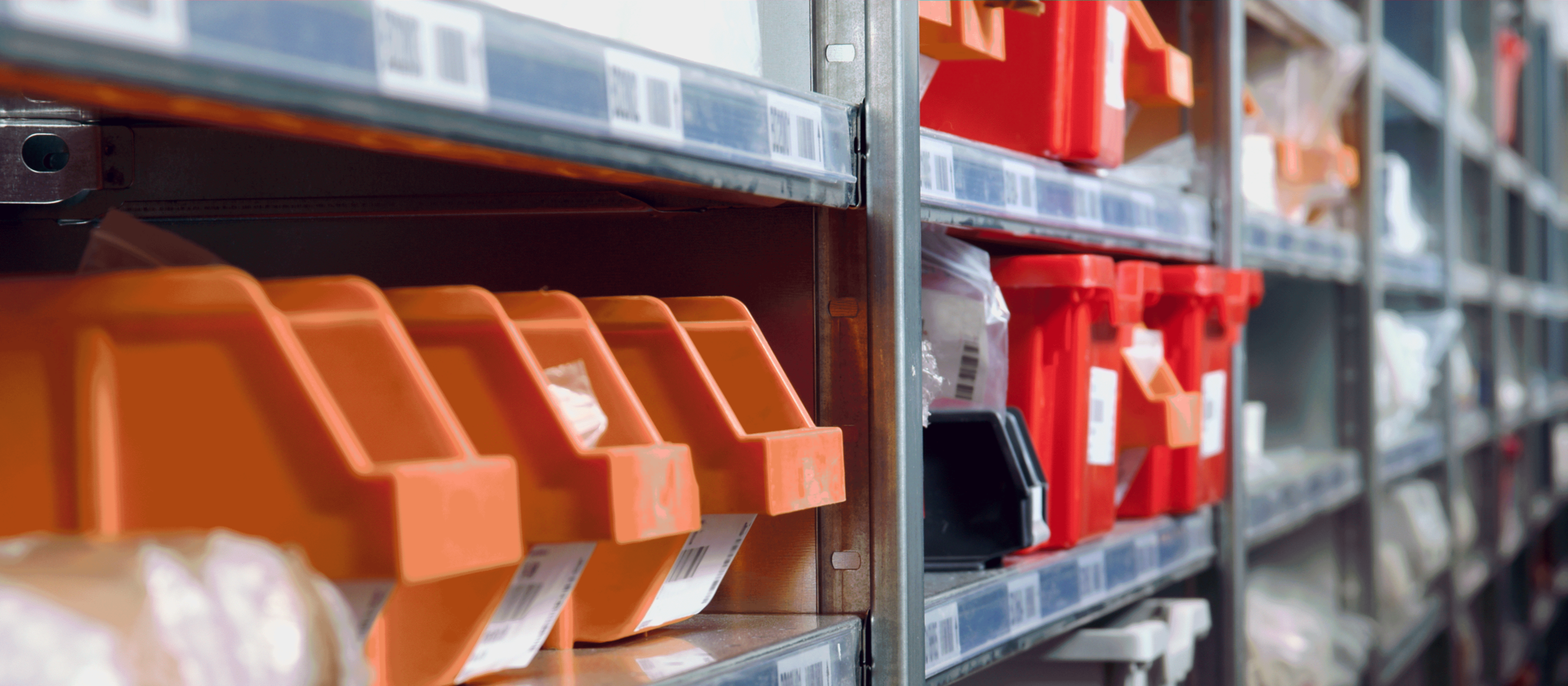In the realm of supply chain management, optimizing warehouse and distribution processes is paramount. It forms the backbone of successful eCommerce operations and retail logistics. However, this task is far from simple, involving a complex interplay of elements from warehouse layout to inventory management, and from technology adoption to data analytics.
This article delves into the strategies that can streamline these processes, exploring the nuances of warehouses and distribution centers, their roles, and their differences. We will discuss the impact of technology, including automation, robotics, and Warehouse Management Systems (WMS). Additionally, we'll explore from in-house to outsourced distribution solutions, transportation management, and reverse logistics.
Join us as we unravel the strategies for optimizing distribution processes, aiming to enhance efficiency, reduce expenses, and ultimately, drive business growth.
Understanding Warehouse and Distribution in the Supply Chain
In supply chain management, warehouses and distribution centers play a critical role. They are hubs where goods are received, stored, and dispatched to various destinations.
Warehouses are primarily storage facilities holding inventory for extended periods, ensuring products are available when needed. Distribution centers, on the other hand, are transit points facilitating the movement of goods from the manufacturer to the end consumer. Their functions include:
- Receiving and checking incoming stock
- Storing goods
- Picking, packing, and shipping orders
- Managing returns and reverse logistics
- The Role of Warehouses and Distribution Centers in eCommerce
The rise of eCommerce has amplified the importance of efficient warehouse and distribution operations. With online shopping, consumers expect quick and accurate deliveries, putting pressure on these facilities to perform at their best.
Warehouses ensure eCommerce businesses have sufficient stock to meet customer demand, storing products until an order is placed online. Once an order is received, the product is picked, packed, and prepared for dispatch.
Distribution centers focus on the swift movement of goods. They receive products from various suppliers, sort them for different destinations, and quickly send them off to customers.
Key Differences Between a Warehouse and a Distribution Center
While both warehouses and distribution centers are integral to the supply chain, they serve different purposes. Understanding their differences is key to optimizing distribution processes.
A warehouse is a long-term storage facility designed to store large quantities of products for extended periods. Warehouses are typically used by manufacturers, wholesalers, and retailers who need to stock up on goods for future sales.
A distribution center is a high-throughput facility designed for the quick turnover of goods. Distribution centers are used by businesses that need to move products rapidly, such as E-Commerce companies and supermarkets. They focus on efficient handling and dispatch of goods rather than long-term storage.

Streamlining Warehouse Layout for Enhanced Operations
The layout of a warehouse can significantly impact its operational efficiency. A well-planned layout ensures the smooth flow of goods, reduces handling time, and minimizes storage costs.
Key strategies for an effective warehouse layout include:
- Minimizing movement by placing high-demand items near the dispatch area.
- Storing items often sold together close to each other.
- Utilizing vertical space with high storage racks and equipment like forklifts to maximize storage capacity without additional floor space.
- Inventory Management: A Cornerstone of Distribution Efficiency
Inventory management is critical in warehouse and distribution operations. It involves tracking stock levels, sales, and deliveries to ensure the right products are available at the right time.
Effective inventory management reduces expenses by maintaining optimal stock levels, avoiding overstocking and understocking. Good inventory management also improves cash flow by freeing up money tied in stock for other investments, leading to increased profitability and growth.
Warehouse Management Systems (WMS) and Their Benefits
Warehouse Management Systems (WMS) are software applications designed to support warehouse operations, providing real-time information about inventory levels, order status, and warehouse capacity.
A WMS streamlines operations by automating tasks such as order picking and packing, inventory tracking, and shipment scheduling. This leads to faster order fulfillment and improved customer satisfaction. Additionally, a WMS provides valuable data for decision-making, identifying trends, highlighting inefficiencies, and suggesting improvements.
Enhancing Efficiency and Accuracy with Warehouse Barcoding
Warehouse barcoding has become indispensable in modern warehouse and distribution operations. By assigning unique identifiers to products, locations, and shipments, barcode technology enhances efficiency, accuracy, and traceability in inventory management and order processing.
The use of barcodes streamlines various warehouse processes such as receiving, picking, packing, and shipping, reducing human errors and improving overall operational efficiency. With real-time visibility into inventory levels and easy tracking of products throughout the supply chain, barcoding plays a vital role in optimizing operations and enhancing customer satisfaction. Integrating barcode technology with WMS and providing proper training to staff on scanning techniques can further amplify these benefits.
Cost-Benefit Analysis: In-House vs. Outsourced Distribution
Deciding between in-house and outsourced distribution is a critical strategic decision. It involves a thorough cost-benefit analysis to determine the most cost-effective and efficient option.
In-house distribution offers more control, customization, flexibility, and direct oversight but requires significant investment in infrastructure, technology, and personnel.
Outsourced distribution can be cost-effective, particularly for small and medium-sized businesses. It eliminates the need for capital investment while leveraging the expertise, technology, and carrier relationships of third-party logistics providers, including access to parcel shipping discounts.
Smart Logistics and the Rise of Scalable Operations
Smart logistics integrates advanced technologies like IoT, AI, and data analytics into logistics operations to enhance efficiency, accuracy, and customer satisfaction. It enables real-time visibility into the supply chain, predictive analytics for demand forecasting, and automated processes for increased productivity.
Scalability is another critical aspect of modern warehouse and distribution operations. As businesses grow and market dynamics change, warehouse operations must scale up or down to meet changing demands. This requires flexible warehouse layouts, scalable technology solutions, and adaptable workforce management strategies.
Utilizing multiple distribution centers strategically can significantly reduce shipping time and cut freight expenses for retail and order fulfillment operations. By strategically locating distribution centers closer to key consumer markets, businesses can expedite delivery times and improve customer satisfaction. Distributing inventory across multiple locations also optimizes shipping routes, reducing transportation costs and minimizing the distance goods need to travel.
This distributed approach not only enhances operational efficiency but also enhances scalability by allowing flexible adjustments based on demand fluctuations and market dynamics. Leveraging multiple distribution centers can lead to faster delivery times, lower shipping costs, and a competitive edge in the retail and order fulfillment landscape.
Transportation Management and Its Significance in Distribution
Transportation management is pivotal in the distribution process, involving planning, executing, and optimizing the movement of goods from the warehouse to the end customer. Effective transportation management can lead to reduced shipping costs, improved delivery times, and enhanced customer satisfaction. It requires a strategic approach, including route optimization, carrier selection, and freight auditing.
Managing Returns: Best Practices for Reverse Logistics
Reverse logistics, or managing returns, is critical in the distribution process. It involves moving goods from the end customer back to the seller or manufacturer for various reasons, such as defects, recalls, or customer dissatisfaction.
Effective reverse logistics can lead to cost savings, improved customer satisfaction, and enhanced sustainability. It requires a well-defined returns policy, efficient returns processing, and a robust system for tracking and managing returned items. Additionally, businesses can leverage data analytics to gain insights into return reasons and implement strategies to reduce return rates.
The Future of Warehouse and Distribution Centers
The future of warehouse and distribution centers is being shaped by technological advancements and evolving consumer expectations. Automation, artificial intelligence, and the Internet of Things (IoT) are transforming warehouse operations, enabling real-time inventory tracking, predictive stocking, and efficient order fulfillment.
Sustainability is becoming a key consideration in warehouse and distribution strategies. Businesses are implementing green practices, such as energy-efficient lighting and equipment, waste reduction, and recycling programs, to reduce their environmental impact and meet regulatory requirements.
Jillamy's Comprehensive Distribution Solutions
Jillamy Packaging and Warehouse offers a wide range of services designed to optimize your distribution processes and enhance operational efficiency. With multiple strategically located warehouses, Jillamy ensures your products are stored and distributed effectively across various regions. Our barcoded warehouses are integrated with advanced Warehouse Management Systems (WMS) across all facilities, providing real-time inventory tracking and management.
Jillamy's transportation options include both middle mile and last-mile delivery, ensuring your products reach their destinations quickly and efficiently. Our services extend to pick and pack operations, fulfillment distribution, and specialized packaging and kitting solutions, tailored to meet the unique needs of your business. By leveraging Jillamy's comprehensive distribution solutions, you can streamline your supply chain, reduce costs, and improve customer satisfaction.
Conclusion: Integrating Strategies for Distribution Excellence
Optimizing distribution processes requires a comprehensive approach integrating various strategies. From streamlining warehouse layout and leveraging technology to implementing smart logistics and scalable operations, each aspect is crucial for enhancing efficiency, reducing costs, and improving customer satisfaction.
As the business landscape continues to evolve, staying abreast of the latest trends and advancements in warehouse and distribution is essential. This enables businesses to adapt their strategies, overcome challenges, and seize new opportunities, achieving distribution excellence and gaining a competitive edge in the market.
Contact Jillamy
For more information on how Jillamy Packaging and Warehouse can help optimize your distribution processes, reduce costs, and enhance customer satisfaction, contact us. Our team of experts is ready to assist you with tailored solutions to meet your unique business needs.



